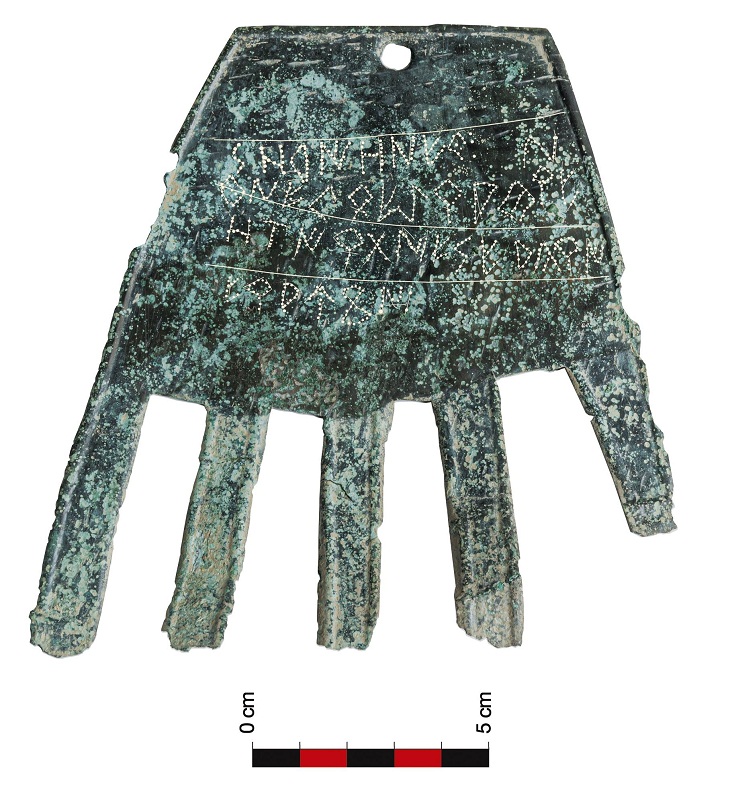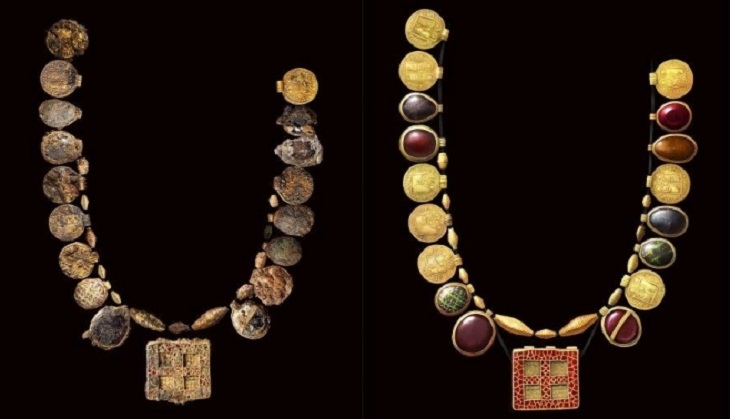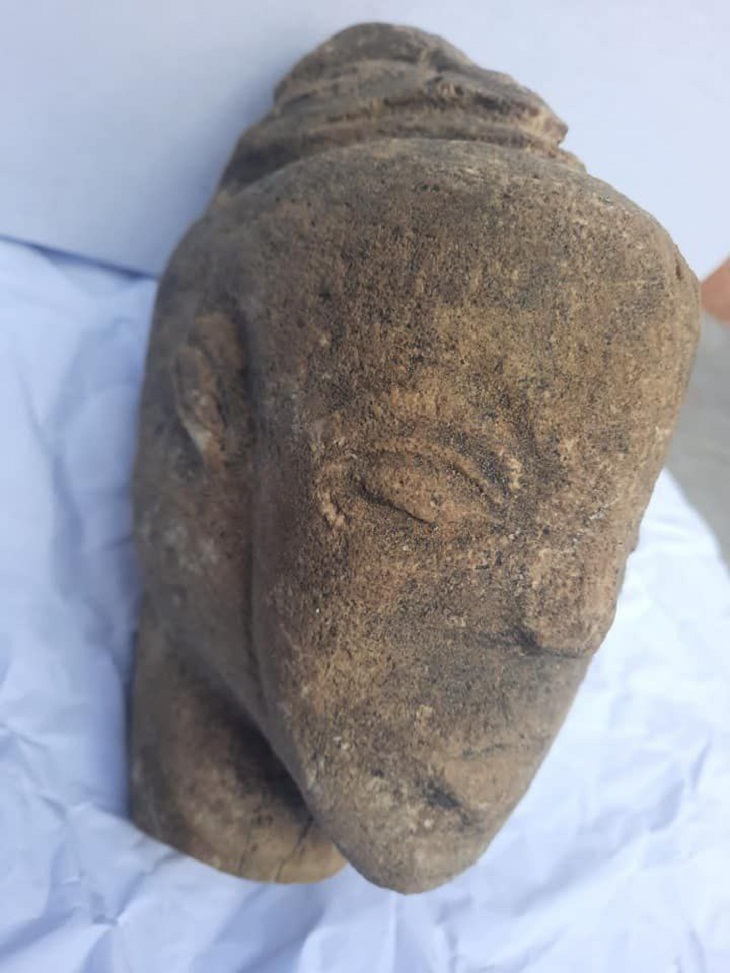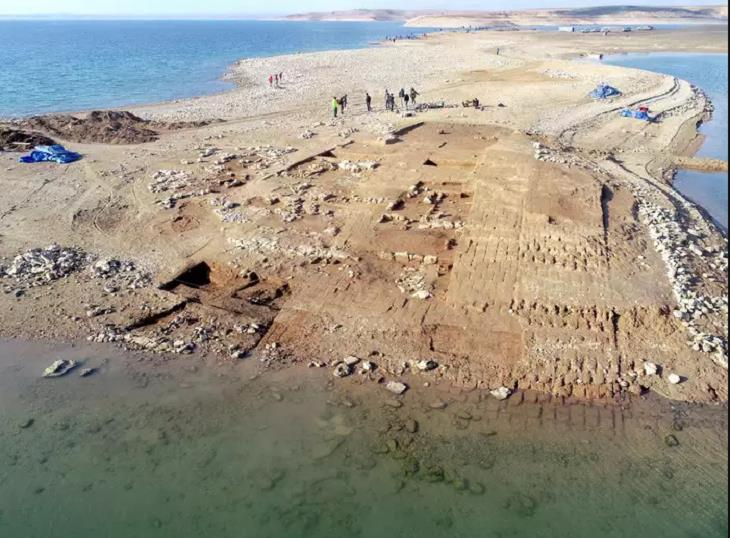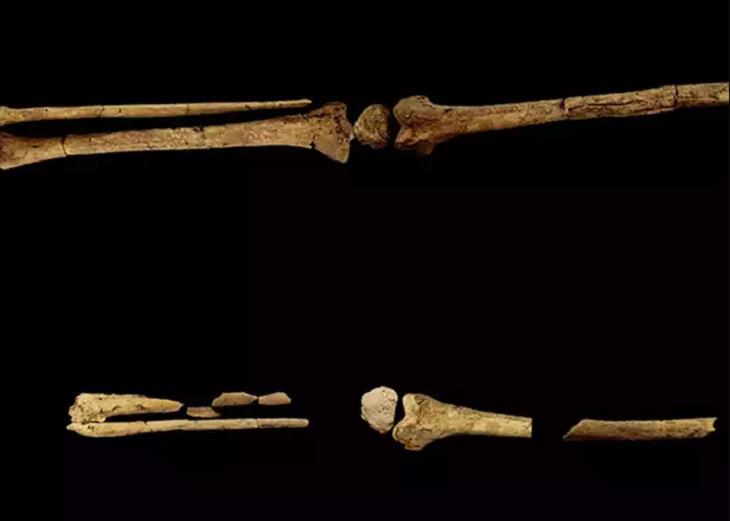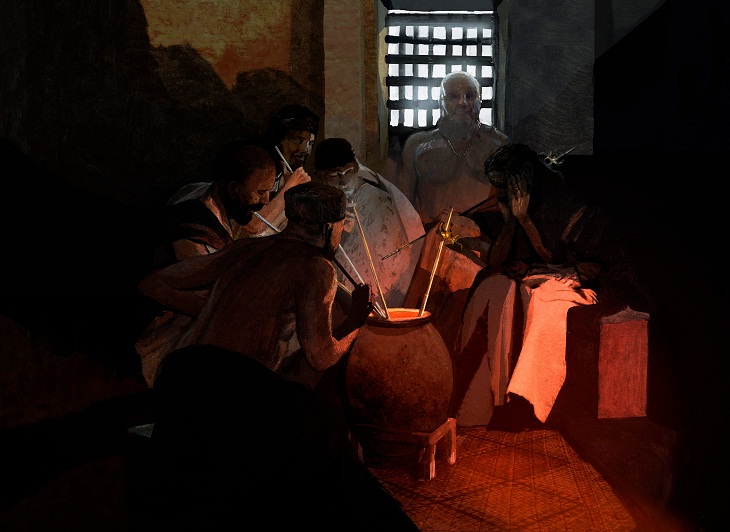Archeologists have made a stunning discovery in the Spanish region of Navarre. In 2021, a bronze hand-shaped sheet was found in the ruins of a castle in Irulegui, southeast of Pamplona (the capital of Navarre). The bronze relic was initially thought to be a simple charm hung on a door. However, the restoration of the piece revealed engraved text.
Named the Hand of Irulegi, the 2000-year-old artifact is believed to be the earliest known example of Proto-Basque, a language also called Euskera. It was spoken by a late Iron Age tribe called the Vascones. As far as we know, this is the first direct testimony we have received from a Vascon.
“This piece upends how we’d thought about the Vascones and writing until now,” Joaquín Gorrochategui, a professor of Indo-European linguistics at the University of the Basque Country, told The Guardian. “We were almost convinced that the ancient Vascones were illiterate and didn’t use writing except when it came to minting coins.”
Five words are engraved on the Hand of Iruleg, but so far, researchers have understood the meaning of only one of them: sorioneku. It’s a proto-form of the Basque word zorioneko, meaning "good fortune." The meaning of the other four words is not yet apparent.
4. A rare Roman-era mosaic discovered in Syria
Researchers uncovered a stunning mosaic in Syria that dates back to the Roman era. At 120 square meters (1,300 square feet), the astonishingly well-preserved mosaic was found in an old building excavated by Syria's General Directorate of Antiquities and Museums. It features gorgeous artwork of mythical scenes, including the Trojan and Amazon Wars. The mosaic also portrays the Roman god of the sea, Neptune, alongside 40 mistresses.
Many of Syria's precious archeological treasures have been damaged because of the war that’s raged in the nation in recent years. This is considered the most significant archeological discovery since the beginning of the conflict in 2011.
The building where the mosaic was found was in the hands of rebel fighters for a while. The researchers haven’t finished excavating and are yet to identify whether the building was a public bathhouse or something else.
Related: These Archeological Finds Left the World Mystified
5. Lost temples, ancient caves, and Buddhist structures found in India
Several caves, temples, and ancient Buddhist structures have been uncovered by the Archeological Survey of India (ASI) in Bandhavgarh Forest Reserve, which is home to endangered Bengal tigers. Their findings also include mural inscriptions in Brahmi, Shankhalipi, and Nagari, some of the oldest writing systems in South Asia.
The team explored the region for the first time since 1938 and documented around 65 square miles (168.3 square kilometers). In all, 26 temples, 26 caves, two monasteries, two votive stupas (containers for cremated monks), 24 inscriptions, and 46 sculptures were found during the excavation.
“The most startling finding is the remains of the Buddhist structures in the region where a Hindu dynasty ruled. It suggests religious harmony, but who built these Buddhist structures is not yet known,” said an ASI official.
Reports say that this exploration has revealed the history of various ancient periods, such as the reigns of Bhimsena, Maharaja Pothasiri, and Maharaja Bhattadave. Meanwhile, numerous historical places are mentioned in the scriptures.
6. 1300-year-old “once in a lifetime” necklace found in England
A 1,300-year-old necklace made of gold and semi-precious stones was discovered at an early Anglo-Saxon burial site in England by archeologists from MOLA (Museum of London Archeology). They say that the ancient jewelry may have belonged to a woman who was an early Christian leader.
The necklace, described as a “once in a lifetime” find, dates back to 630–670 AD. It features 30 pendants and beads made from Roman coins, gold, garnets, glass, and semi-precious gemstones. Its centerpiece is a rectangular pendant with a cross motif made of red garnets and gold.
A statement from the museum said that two decorated pots and a shallow copper dish were also found at the burial. Additionally, x-rays of soil blocks removed from the grave revealed an exquisitely decorated cross with extremely unusual depictions of human faces. The soil is being investigated closely to extract further information.
7. 4,500-year-old goddess head statuette uncovered in Gaza
A stone statue of an ancient goddess was found in the Gaza Strip earlier this year. Experts think the 22-cm-high (8.7 in) sculpture depicts Anat, the Canaanite deity of love and war, and dates back 4,500 years to the late Bronze Age. The discovery was made by a Palestinian farmer Nidal Abu Eid while cultivating his land in Khan Younis, located in the Gaza Strip.
According to the Bible, the Canaanites lived in Jerusalem and other Middle Eastern cities before monotheism emerged. This limestone statue is a reminder of the Canaanite roots of the Gaza Strip.
Jamal Abu Rida, director of Gaza's Ministry of Tourism and Antiquities, called the statue "a symbol for the oldest human civilization that lived in Gaza City."
8. Sir Ernest Shackleton’s lost ship ‘Endurance’ found in the Antarctic
Sir Ernest Shackleton was a polar explorer who was the first to find a practical route to the South Pole. He is also famous for discovering the area beyond Shackleton Inlet to the Beardmore Glacier. His ship, Endurance, sank in the Weddell Sea on November 21, 1915, after being crushed by sea ice. Shackleton’s ambitious goal was to cross the Antarctic by way of the South Pole. Unfortunately, that was not to be. Shackleton and his men made an astonishing escape, but the ship’s remains couldn’t be recovered. Until this year.
The wreck was found 3,050 meters (10,000 feet) below the ice of the Weddell Sea in near-perfect condition. Mensun Bound, the director of explorations at the Falklands Maritime Heritage Trust, which organized the expedition to find it, said that the ship’s name could still be seen emblazoned across the stern.
Experts believe the Weddell Sea's cold temperatures would have helped preserve the wooden vessel.
9. Drought reveals 3,400-year-old city in Iraq
As Iraq battled its most severe drought in decades this year, a sprawling 3,400-year-old city emerged in the Mosul reservoir along the Tigris River in the Kurdistan region. The Bronze Age city, at an archeological site called Kemune, is believed to have been a hub of the Mittani Empire that reigned from 1550 to 1350 BC. The kingdom stretched from the Mediterranean Sea to northern Iraq according to senior archeologists.
Parts of the ancient city were first found during a major drought in 2018 when archeologists managed to excavate a lost palace with 7-meter (22 feet) walls and chambers decorated with painted murals. However, they didn’t have enough time to map the city before the waters returned.
This time, however, researchers were able to map most of the city. According to a statement released by the University of Tübingen in Germany, the team found an industrial complex, a fortification with a wall and towers, and a multistory storage facility that likely held goods from all over the region.
One of the most fascinating finds in the lost city was five ceramic vessels containing over 100 cuneiform tablets. Some of these clay tablets are still in their clay envelopes! Leading archeologists describe the unfired clay tablets as “close to a miracle.”
10. Scientists translate the oldest sentence written in the first alphabet
A recently discovered inscription on an ivory comb is thought to be the oldest known sentence written in the earliest alphabet. The double-edged comb, measuring 3.5 cm by 2.5 cm (1.3 inches by 1 inch), was found several years ago in Tel Lachish, an old Canaanite city in the foothills of central Israel. However, scientists only recently noticed that the luxury comb was engraved with 17 tiny letters and seven words, reading: “May this tusk root out the lice of the hair and the beard.”
The researchers took high-resolution photos of the comb using a microscope and found some remains of head lice still present. They also believe it was possibly an imported luxury item, most likely from Egypt.
The comb clearly provides undeniable proof that humans have endured the lice menace for thousands of years, and even the rich weren’t spared from their wrath.
The message is thought to have been penned around 1,700 BC. It gives information about some of the earliest uses of the Canaanite alphabet, which was invented around 3,800 years ago. "There are Canaanites in Ugarit in Syria, but they write in a different script, not the alphabet that is used till today…. The comb inscription is direct evidence of the use of the alphabet in daily activities some 3,700 years ago. This is a landmark in the history of the human ability to write," notes archeologist Yosef Garfinkel from the Hebrew University of Jerusalem in Israel.
Lachish was a large and prosperous Canaanite city-state during the Late Bronze Age. Ten Canaanite inscriptions have been found in Lachish thus far, but this is the first one with a full sentence.
11. World's oldest evidence of surgical amputation
Early humans performed surgical amputations, a recent discovery published in Nature has revealed. A team of Indonesian and Australian researchers uncovered the 31,000-year-old skeleton of a young adult in a cave in Indonesia that is missing its left foot and part of its left leg.
Analysis revealed that the bones weren’t lost in an accident but were, in fact, carefully removed. Both bones showed a clean, slanted cut that healed over, and there were no signs of infection. Researchers also noted that the amputation was performed when the person was a child. The individual survived the procedure and lived for another 69 years as an amputee. The remains were carefully buried in Tebo Cave.
While it is not entirely clear what led to the amputation, the person also had trauma to their collar bone and a well-healed neck fracture. Researchers say these injuries may have occurred during the same event, possibly a rock fall. Additionally, they speculate that a sharp tool was used to remove the limb and that some plant with medicinal properties may have been applied to prevent infection.
According to the study authors, these finds indicate that some modern human foraging groups in tropical Asia acquired sophisticated medical knowledge and skills long before Neolithic agriculture was introduced.
12. World's oldest drinking straws
Archeologists have identified the world's oldest-known drinking straws, and they are nothing like the ones we use today. These straws are actually three-foot-long silver and gold tubes discovered in 1897 in the Maikop kurgan, an ancient burial mound in South Russia. Made of gold and silver, these tubes date back more than 5,000 years.
For decades, researchers were unable to determine the purpose of the artifacts. It had been assumed that they were scepters or poles for a canopy. This year, however, a further study by archeologists from the Russian Academy of Sciences revealed that they were used as long straws, probably during drinking ceremonies — a custom common during feasts in the ancient Near East. The new study of the tubular metal artifacts further states that these items could be the oldest-known drinking straws in the world.
To test their hypothesis, the researchers analyzed the tubes’ silver tips, which sport metal strainers – possibly to help filter out the impurities in ancient beer. The residue from one of these tips revealed the presence of barley starch granules, fossilized particles of plant tissue, and a pollen grain from a lime tree. This is potential evidence that the tubes were used to consume barley beer.
According to the research team, sipping beverages with companions in this manner originated in Mesopotamia and spread from there to Maikop.
Share this post with your friends and family...

